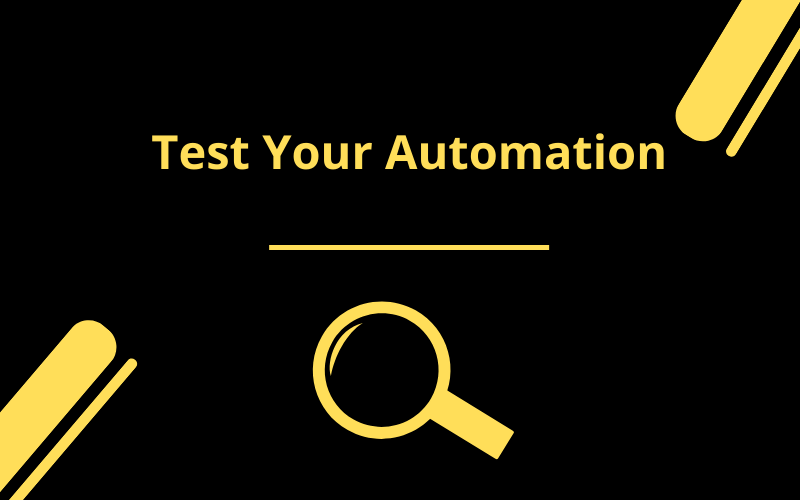In this digital age, finding ways to automate workflows is more important than ever. That’s where workflow automation comes in-by automating simple tasks; we can free up more time to focus on the bigger picture. This article will explore the basics of workflow automation and the steps to automate your workflow.
The Basics of Workflow Automation
Workflow automation is the process of automating simple tasks to streamline your work. You can optimize your workflow and increase your efficiency by automating these tasks.
There are many different ways to automate your workflow. You can use a tool to automate simple tasks like adding new contacts to your CRM or sending out automatic emails. Or, you can use a more complex system to automate your entire business process.
The key to successful workflow automation is finding the right tools for your needs. There’s no one-size-fits-all solution, so it’s essential to experiment and find the best tools for you and your team.
How to Automate Your Workflow?
Now that you know the basics of workflow automation, it’s time to start automating your work. Follow these steps to get started:
Define Your Goals
The first step is to define your goals. What do you want to achieve with workflow automation? Do you want to save time on simple tasks? Or do you want to streamline your entire business process? Once you know your goals, you can look for the right tools.

Important Tips When Defining Your Goals
There are a few essential things to keep in mind when defining your goals:
- Be realistic about what you can achieve. Workflow automation can’t solve all your problems, so it’s essential to be realistic about what it can do.
- Start small and scale-up. It’s easier to automate simple tasks and then scale up to more complex ones.
- Find the right balance between automation and manual work. Automating too many tasks can lead to errors and inefficiencies. Find the right balance between automating simple tasks and doing more complex tasks manually.
Find the Right Tools
There are many different workflow automation tools available. Here are some things you should consider to find the right one for you.

- Needs and Budget: You first need to consider your needs and budget. What are you looking for in a workflow automation tool? And how much are you willing to spend? There’s no one-size-fits-all solution, so finding the right balance between cost and features is essential.
- Ease of Use: The next thing you should consider is the ease of use. You want a tool that’s easy to use and set up, so you can start automating your work immediately.
- Flexibility: Another important consideration is flexibility. You want a flexible tool to adapt to your changing needs.
- Integrations: You should also consider integrations. Does the tool integrate with the other tools you use? This is important if you want to automate your entire workflow.
- Features: Other features you might want to consider are task management, email automation, and data analysis.
- Free Trial: Dedicated workflow automation software offers a free trial, so you can try them before buying. This is a great way to see if a tool is right for you.
Set Up Your Workflow
Once you’ve found the right tools, it’s time to set up your workflow.
Create a Process Map of Your Current Workflow
The first step is to create a process map of your current workflow. This will help you identify which tasks can be automated.
- Create a List of All the Steps in Your Current Workflow: The first step is to create a list of all the steps in your current workflow. This will help you identify which tasks can be automated.
- Use a Flowcharting Tool: The next step is to use a flowcharting tool to create a visual representation of your workflow. This will help you see which tasks can be automated.
Once you have your process map, you can start identifying which tasks can be automated.
Identify Which Tasks Can Be Automated
The next step is to identify which tasks can be automated. The ideal candidates for automation include:
- Repetitive Tasks: Repetitive tasks are ideal candidates for automation. If you find yourself doing the same task repeatedly, it’s a good candidate for automation.
- Time-Consuming Tasks: Automating time-consuming activities is also a good idea. If a task takes a long time to complete, it’s an excellent candidate for automation.
- Error-Prone Tasks: Error-prone Tasks may also be automated. If you find yourself making frequent errors, it’s a good candidate for automation.
Another thing to consider is whether a task requires human judgment or decision-making. If so, it’s probably not a good candidate for automation.
Once you’ve identified which tasks can be automated, you can start setting up your automation rules.
Set Up Your Automation Rules
The next step is to set up your automation rules. This involves specifying the trigger, action, and conditions for your automation.
- Identify the Trigger for Automation: The first step is to identify the trigger for your automation. This is the event that will start the automation. For example, you might want to automate an email response whenever someone fills out a contact form on your website.
- Specify the Action: The next step is to specify the action that will be taken when the trigger occurs. In our example, the action would be sending an automated email response.
- Specify Conditions (Optional): You can also specify conditions for your automation. This allows you to control when and how the automation is triggered. For example, you might only want to send an automated email response if the contact form is filled out during business hours.
Test Your Automation
Once you’ve set up your automation rules, it’s essential to test them to make sure they work as intended. To do this, run your workflow with a few test cases and see if the automation works as expected.
If everything looks good, you’re ready to start using your automation! If not, make sure to fix any errors before using it.

Monitor Your Automation
Once you’ve started using your automation, it’s essential to monitor it to ensure it’s working as intended. This involves periodically checking your workflow to make sure everything is running smoothly.
If you notice any errors, fix them as soon as possible.

Conclusion
Workflow automation can help you optimize your workflow and increase your efficiency. By automating simple tasks, you can free up more time to focus on the bigger picture. Follow these steps to start workflow automation: define your goals, find the right tools, set up your workflow, test and tweak your workflow, and monitor your progress.
